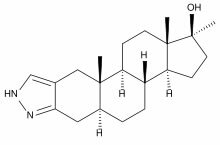
The element fluorine, for example, has this ability to attract electrons and “capture them”, giving rise to a negatively charged ion. When this occurs, a specific amount of energy is released for each element. In the case of fluorine, this energy is 328 kJ. Thus, this energy released is defined as Electroaffinity, for it measures the degree of affinity or the potency of the attraction of the atom by the added electron.
F (g) + and- → F-(g) + 328 kJ
If we compare the electroaffinity of fluorine, which is an element of the VII A or 17 family of the Periodic Table, with that of lithium, which belongs to the First family, we will see that the electroaffinity of fluorine is much higher, as, as we have seen, it is 328 kJ, while that of lithium is only 60 kJ.
Facts like this are repeated when we examine the electroaffinities of the elements across the periods and families of the Periodic Table. Thus, although the electroaffinity values of all elements have not yet been determined experimentally, it is possible to generalize that
the electroaffinity decreases with increasing atomic radius, that is, in the Periodic Table, it increases from bottom to top and from left to right. What makes electroaffinity a periodic property.Do not stop now... There's more after the advertising ;)
Therefore, as can be seen in the diagram below, since they have not yet been determined experimentally the values of the electroaffinities of the noble gases (family 18, or VIII A or even, 0), they were only estimated; the elements with the greatest electroaffinities are halogens (elements belonging to family 17 or VII A) and oxygen.

By Jennifer Fogaça
Graduated in Chemistry
Would you like to reference this text in a school or academic work? Look:
FOGAÇA, Jennifer Rocha Vargas. "Electroaffinity or Electronic Affinity"; Brazil School. Available in: https://brasilescola.uol.com.br/quimica/eletroafinidade-ou-afinidade-eletronica.htm. Accessed on June 28, 2021.


